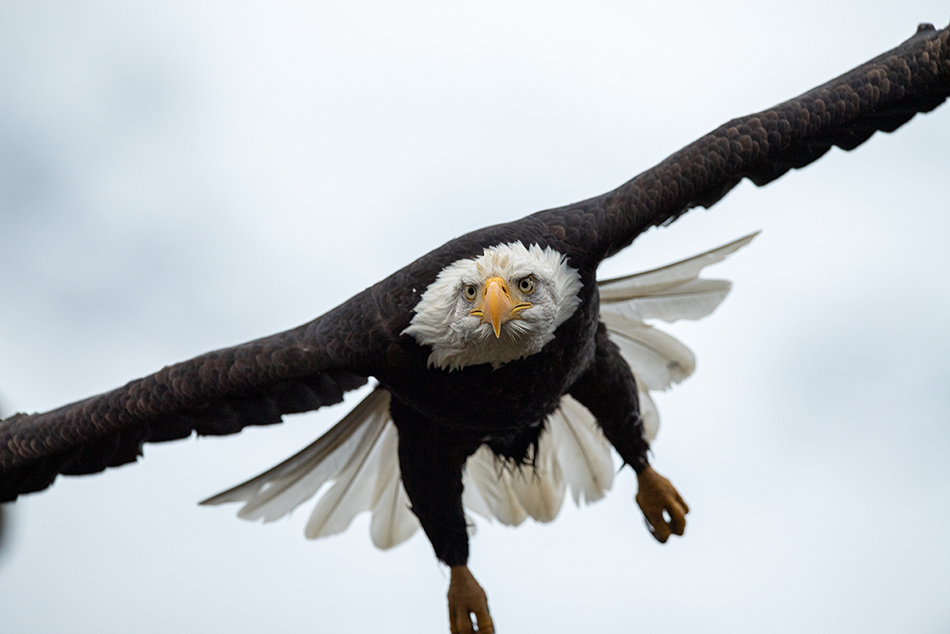
I just returned from an incredible eagle photography workshop in Haines, Alaska. Hands down this is the most eagles I have ever seen in one spot, and they land to eat salmon right in front of you. What makes the Chilkat Eagle Preserve special is that ability to capture eagle fighting and flight images at close proximity. Everyone on our workshop got stunning eagle fighting images, as well as amazing flight shots against snow-capped peaks. One technique we used to get the best results was customizing the buttons on our cameras to toggle between the two autofocus patterns we used the most; single point and group-area autofocus.

First, we all used back-button focus. This is most effective with moving subjects and allows recomposing without having to hold the shutter button halfway down. Next, I set my drive to AF-C and to CH for maximum number of frames. My back button AF-ON was set to single point. This is my default focus pattern, and the one I use the most. But what happens when an eagle flies past?
To get into group-area autofocus fast, I set my depth of field preview button to group-area autofocus with autofocus engaged. In other words, when I depressed my depth of field button my camera was instantly in group area autofocus and actively focusing. To set this on your Nikon, go to the custom menu, choose controls, and choose custom control assignment. This will allow you to set various buttons to different functions on your camera. Many other camera brand will have similar options in their menu.

The other way to change pattern modes on Nikon cameras is to hold the lower left front button in while toggling between modes. This works fine but takes a little more time to do it. I used group-area autofocus for all my flight and action shots, and my D5 and D850 very rarely missed focus…generally when I didn’t get the autofocus point on the bird. I used single point auto focus for static shots and distant bird flight shots when the eagle was really small in the frame and I needed pinpoint autofocus against the mountain backdrops.
Remember, photography is a mix of technical and creative. The better we are at operating and maximizing our camera functions, the quicker we can get into our creative space and focus on the image, not the camera.